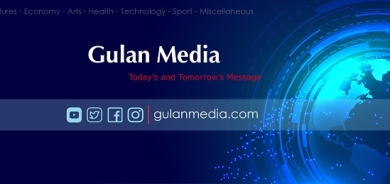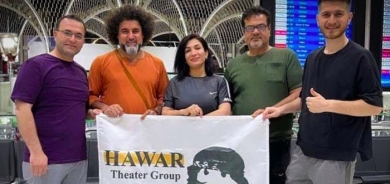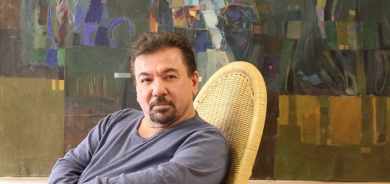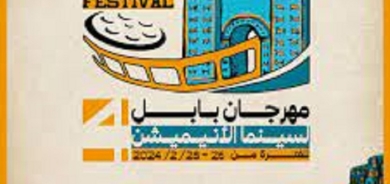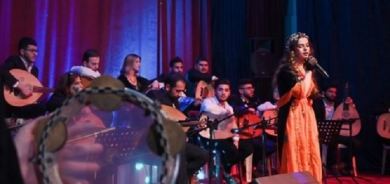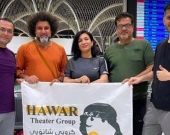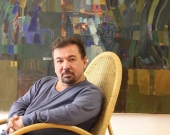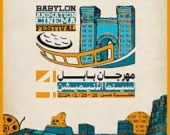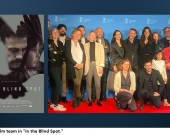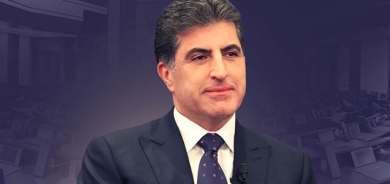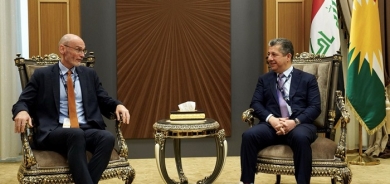Dance for Kobane
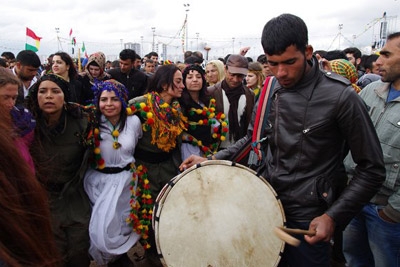
At the “Syrian” camp on the harbourside in Calais, good-humoured young men gather, en route from the horrors of their countries to what they hope will be a new life in England. In 2014 the police bulldozed their first camp, and then evicted them from a second camp, but they are still there; their small tents stand on the loading bay of a disused warehouse, and a little iron stove burns bright with scavenged timber. They make sweet tea and we discuss politics, religion, music, song, war, and ways of entering Britain illegally, because that’s what they spend their days trying to do.
We come here regularly. We’re musicians. Music is a bond of solidarity. Back in November we brought Arabic instruments from London so they could play their music — songs full of nostalgia, yearning, and hopes for the future. But tonight it’s their turn to do the musicology. They pull out their mobiles and struggle to get a WiFi signal. One of them finds a soulful muwashshah from Aleppo — the wrecked city once home to that musical genre — and they sing along. Another shows us a clip of a master of the Kurdish saz (apart from one Moroccan, they are all Kurds). A third hunts for a clip of a song from (and for) his hometown of Kobane, in Syria near the Turkish border, with photos of its devastation in the Kurds’ 131-day war against the so-called Islamic State (IS).
Under the stars the talk turns to nationhood. Will the Kurds ever be able to create a single nation from entities divided between Iraq, Iran, Turkey and Syria? The philosopher, speaking from the depths of a salvaged armchair, admits the difficulties: “We have the problem of what will be the national language. Among the Kurdish travellers in Calais, we all speak different Kurdish languages. We don’t understand each other. So we have to talk in either English or Arabic.” He uses the word “traveller” — not refugee, migrant or asylum-seeker.
Kobane as cultural centre
We turn to Kobane. With luck, the war there is over. Now begins the rebuilding. But in what image and whose interests? We’ve all seen the big new gated estates in Iraqi Kurdistan, with their satellite TVs, patios and four-wheel-drives, sitting next to the poverty of Kurds in refugee camps. The new Kobane should not be like that.
In the town the bulldozers are already at work clearing the rubble of war. The reconstruction will not be easy. Mayor Enwer Muslim points out: “Whilst IS have now been defeated, there are still serious dangers for the people of Kobane. The city is full of unexploded bombs and mortars. Children play in the street next to the real threat posed by such bombs”. Kurds in the diaspora have many agendas for the new Kobane — ecological, secular, gender aware, maybe even as an experiment in radical democratic governance.
At the School of Oriental and African Studies in London a project has been under way, collecting and editing the songs of the “Four Kurdistans” (1). Some are songs of liberation; others are part of the national tradition of deng bej (unaccompanied epic and improvised singing), plus a huge repertoire of women’s songs of love, loss and exile. At a recent meeting a call was made for this musical culture to be included as a strong part of Kobane’s reconstruction. A campaign is being launched for the new town centre of Kobane to be built as a pedestrianised precinct for poets, musicians and singers, the first step in a future process that could eventually see the town recreated as a centre of pan-Kurdish culture.
There is also a plan to build a music academy, for the celebration, performance and archival research of Kurdish music and song. Here in Calais, the philosopher raises an eyebrow: music and song are not permitted in Islam, he says. It’s haram. If he ran the next government in Kurdistan, music and song would not be allowed. But, I point out, in many ways Kurdishness expresses itself through dance and song.
Kobane focused the efforts of Kurdish communities all around the world, whatever their political or religious persuasions, to give military, medical and welfare assistance to its peshmerga defenders. That mobilisation symbolised a new unity. And so this January, Kurdish communities around the world danced — victory dances for the liberation of Kobane (2).
The dancers move in a curving line, arms straight downwards, hands clasping the hands of their neighbours. They lean forward, heads close together as they dance. Tightly synchronised steps which circle steadily to the right, like the pulsing beam of the beautiful Calais lighthouse that illuminates our conversation, with its rhythm of “one-one-two-three”. (The night birds around the stove say “we don’t like to have light in the port at night, we prefer the dark, to do what we have to do.”) And the leader of the dance carries a kerchief that marks the rhythm. Kurdish migrants in Calais also dance like this. In Kurdish culture this is democratic dance — the leading places are taken by the young and vigorous, but further down the line come the elderly, the infirm, the children. Men and women dance joyously and proudly together. For many, this is an image of a potentially liberated Kurdistan.
Song, too, has been inseparable from the struggle. In the battle for Kobane, song has been the fighters’ companion and their way of reaching out to the world. The first time we saw a clip of a young woman called Nergiz, she was sitting by a little fire singing the song for Kobane (3). In the next clip, she had been wounded in the fighting and was in hospital. But even as the doctor was dressing her wound she was singing that song (4). We heard through friends that she had been killed. But a week later, we saw another clip — she was wounded and on crutches, but still singing.
A fundamental human right
The Syrian camp is round the corner from the Kurds, in a row of sleeping bags and mattresses on the porch of the church of St Peter and St Paul. Among them is a man I recognise from the time when we were just off the ferry, bringing an oud. Walking into town we met a protest picket of Syrians asserting their rights under the European Union’s war resettlement commitment. One stepped from the line and said he was an oudplayer. He sat on a kerbstone and started to play (5), heartfelt and full of nostalgia. Tonight he is again in soulful mood: some of his friends are in England now; he remains in Calais.
The migrants we have met are people of extraordinary fortitude, determination and hope. To get here, they have had to endure hunger, imprisonment, physical violence and humiliation. They arrive stripped of everything. What is left in them are the songs, the music and the dance of their homeland. This is true of all migrants of all times. Through the centuries the Irish have known all this and more — their language and instruments banned, their songsters imprisoned or killed. But now when so many peoples are uprooted, it takes on new meanings.
Our musical solidarity work with migrants has shown us something important. In an alien, racist and hostile land, song and dance empowers them, and should be part of every programme of humanitarian aid for uprooted peoples. The Charter of Lampedusa was created after the shipwreck deaths of more than 600 women, men and children off the coast of Italy in October 2013 (6); there are strong arguments for music, song and dance to be written into it as fundamental human rights, particularly of migrants now.
In the fast-shifting geopolitical realities of the Middle East, the Kurds in Kobane became for a moment, earlier this year, the “saviours of western civilisation”, battling against IS. As mayor Enwer Muslim says, “the resistance and victory of Kobane was a victory for humanity.” Sections of the town have been bombed to hell, but that might be an opportunity: Kurds in London have proposed that whole sections of the town should be left untouched as a monument to resistance, in the same spirit as Spain left the town of Belchite as a ruin after the Spanish civil war (7). (That won’t be easy, since Kobane has to organise the return of 200,000 people who fled.) They feel Kobane could become the Kurds’ Acropolis.
Le Monde Diplomatique

